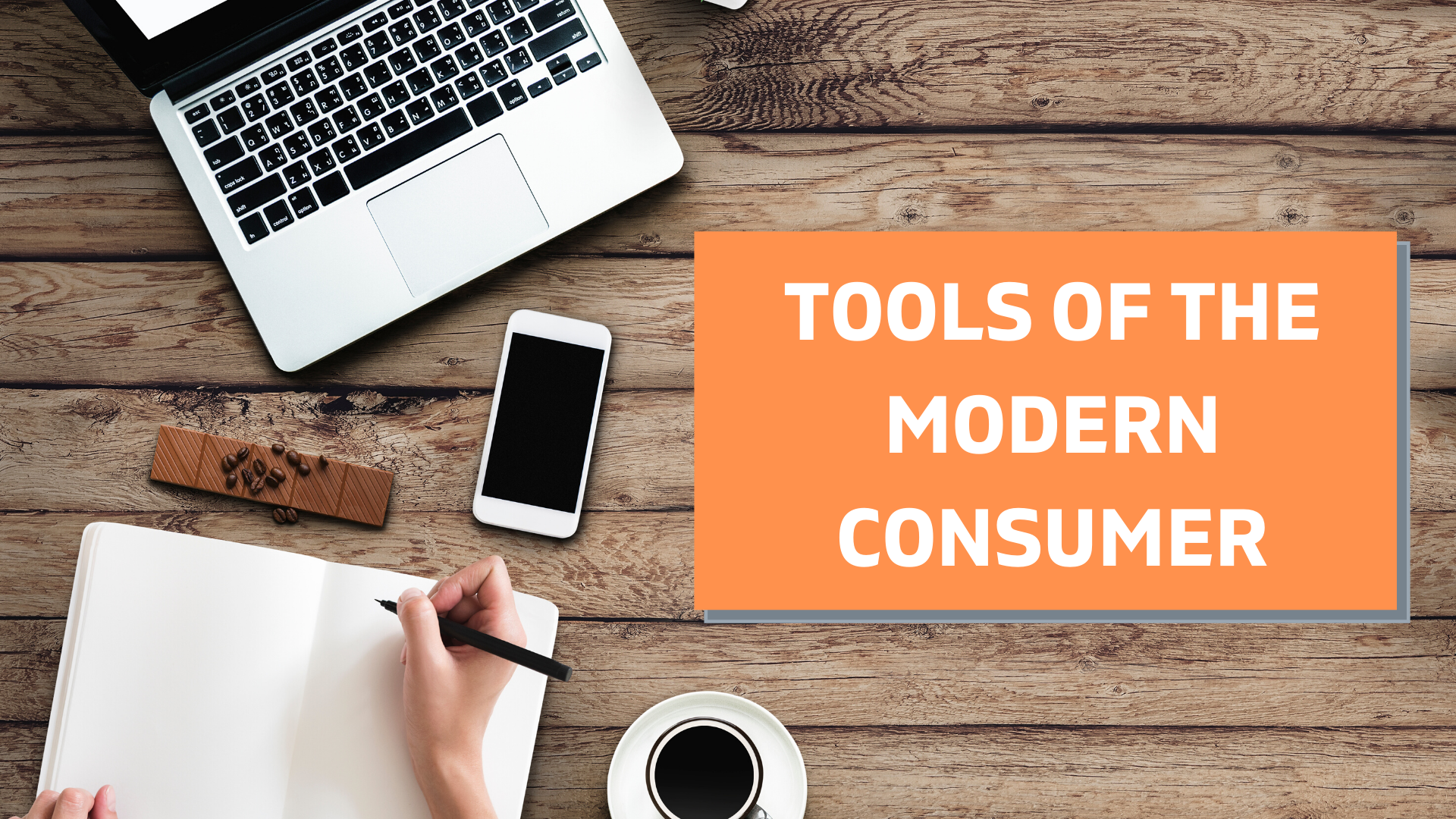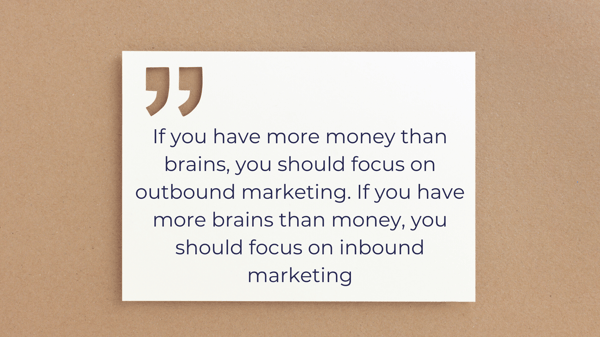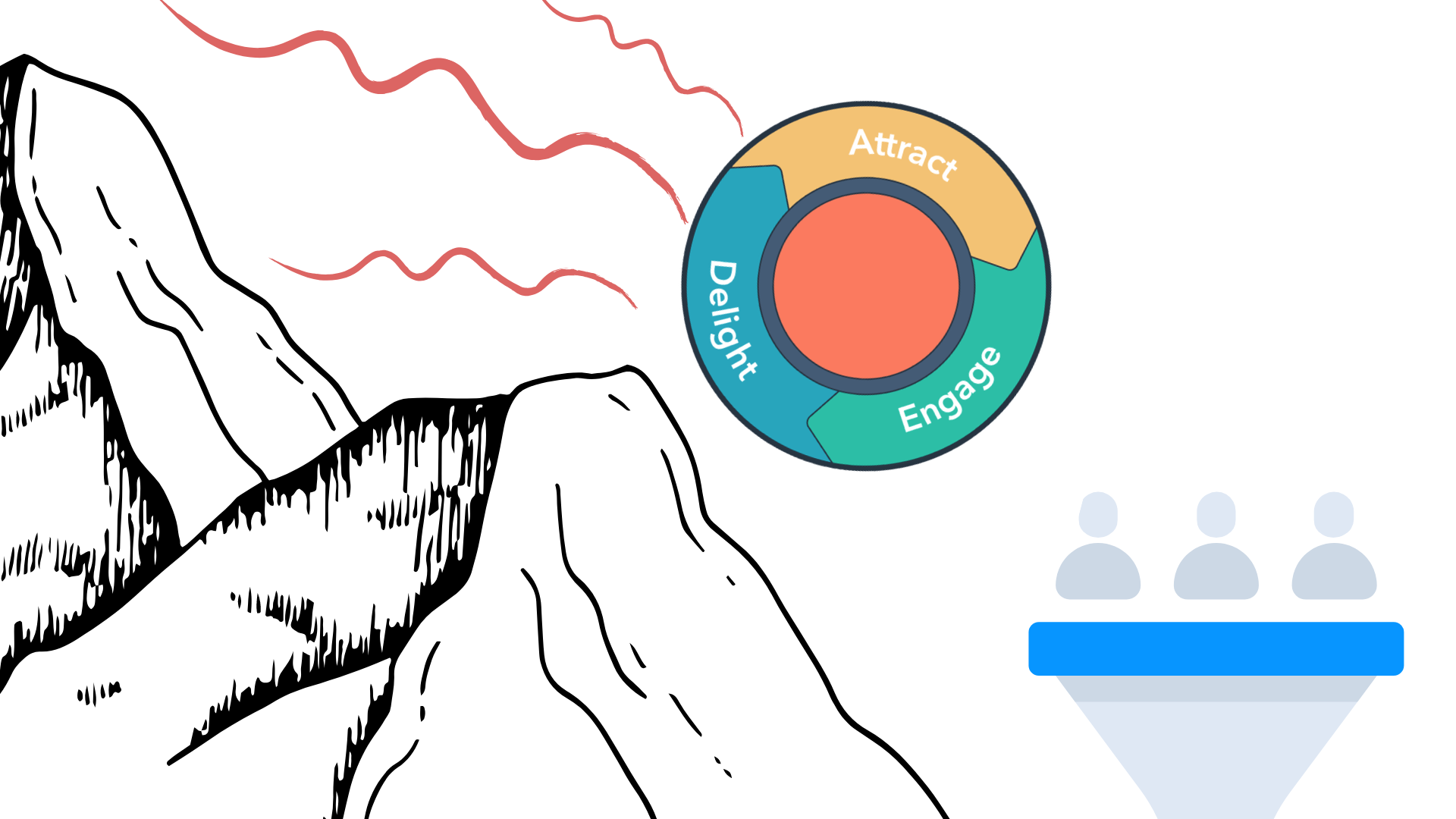The days of cold calls and emails are (mostly) over. If you want to bring your marketing strategy into the 21st century, you need to change how you think about selling to your customers.
Why is this? Because people have changed how they buy.
If you want to keep up with how modern consumers buy goods and services, you need to check out inbound marketing.
What is an Inbound Marketing Methodology?
First, let’s cover some definitions. What is inbound marketing? It’s the opposite of outbound marketing.

Outbound marketing centers on disruptive communication - cold calls, pushy advertisements, and one-way conversations. It’s all about telling the consumer what they want and need.
.png?width=1920&name=Copy%20of%20Untitled%20(3).png)
On the other hand, inbound marketing is about attracting the right customers to your brand by giving them something of value. It’s about educating and delighting your customer, so they view you as an authority in your industry and a company that they want to do business with.
What Are the Benefits of Inbound Marketing?
1) Buyers Prefer It
The best thing about inbound marketing is that it is what modern buyers want. It uses buyer behavior and psychology to figure out what a consumer wants and needs.
People aren’t interested in the memorized sales pitch anymore. They don’t want to be part of a massive, impersonal email blast. And they don’t want a cold call from your salesperson eating up their afternoon.
These days, buyers are in control. With powerful search engines like Google or Facebook (yes, it’s a search engine too!) at their fingertips, modern consumers do their own research about pain points and solutions. With a strong content and SEO strategy, you can position your brand as an authoritative, educational resource for consumers.
2) It’s Economical
Marketing and business guru Guy Kawasaki once said, “If you have more money than brains, you should focus on outbound marketing. If you have more brains than money, you should focus on inbound marketing” (Halligan and Shah).

Inbound marketing is all about strategic, targeted campaigns that focus on people who are likely to convert. Instead of sending an impersonal message to a vast number of people (most of whom will never buy anything), inbound is all about personalized, persuasive campaigns. It’s quality over quantity, so your ROI will grow.
3) Out with the Funnel, in With the Flywheel
You’ve probably heard of the buyer’s journey or marketing funnel. It’s the stages a customer goes through before buying a product.
But funnels aren’t working anymore.
Why?
Because people are buying differently than they used to. These days, people want recommendations from friends, family, and even strangers. They hear about products and companies through word of mouth. A traditional funnel doesn’t address how one customer can create buying momentum on their own.

With the flywheel, happy customers drive momentum by creating more satisfied customers through referrals. Plus, because people are delighted by your product or customer service, they continue to repurchase. In the inbound flywheel, the customer is the catalyst.
By making the customer the center of your business, you’re only going to attract, engage, and delight more people. It’s a win-win situation.
The traditional marketing funnel sees customers as an afterthought. The focus is on selling. With the flywheel, you reconfigure your operations, production, and marketing strategies to keep happy customers coming back for more. As you gain momentum, the flywheel takes less effort to spin. That’s the ultimate goal--to do less and see more results.
If that’s something you’re interested in, you might want to dip your toes into the world of inbound marketing. Don’t worry. It’s easy to get started. Check out our guide to inbound marketing here.

And if you ever have any questions about how inbound marketing can work for your business, don’t hesitate to reach out to Rizen.
We're a growth partner you can depend on to build smart strategies for your business. Our approach works - just take a look at our case studies! Start your journey by contacting us today. We can't wait to hear from you!




![Reignite Your Millennial Marketing Efforts With These [On Fleek] Ideas](https://blog.gorizen.com/hs-fs/hubfs/Podcast/009%20-%20Millennial%20Marketing%20Blog.gif?length=600&name=009%20-%20Millennial%20Marketing%20Blog.gif)


No Comments Yet
Let us know what you think